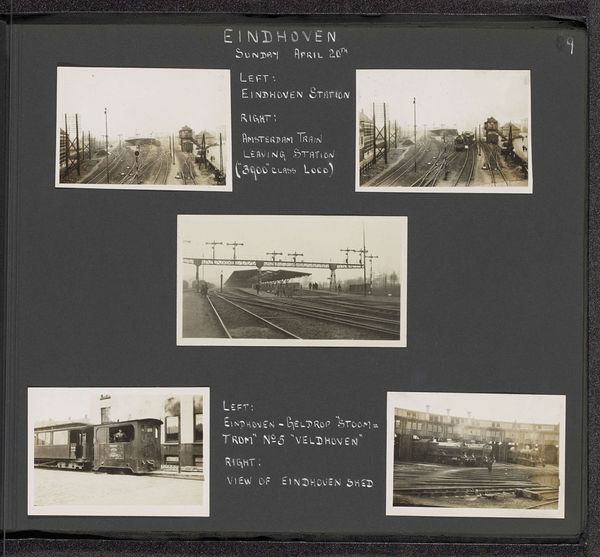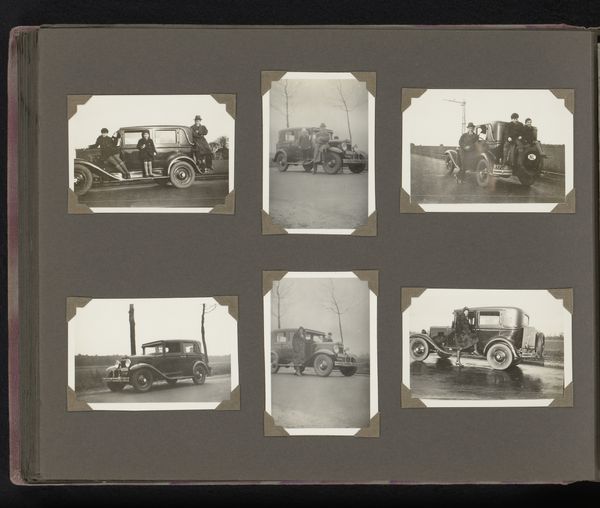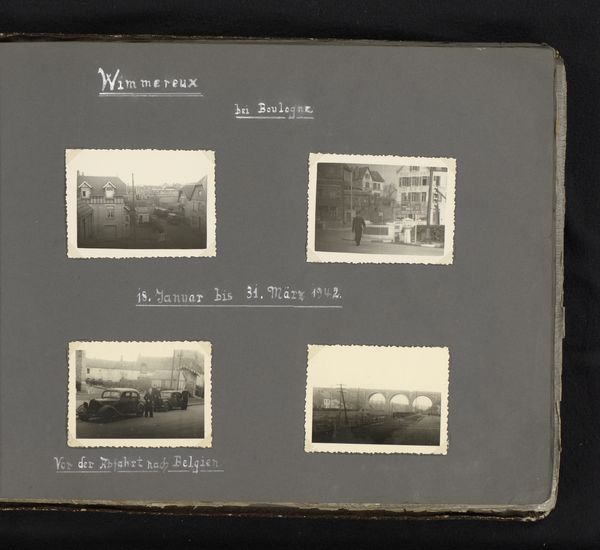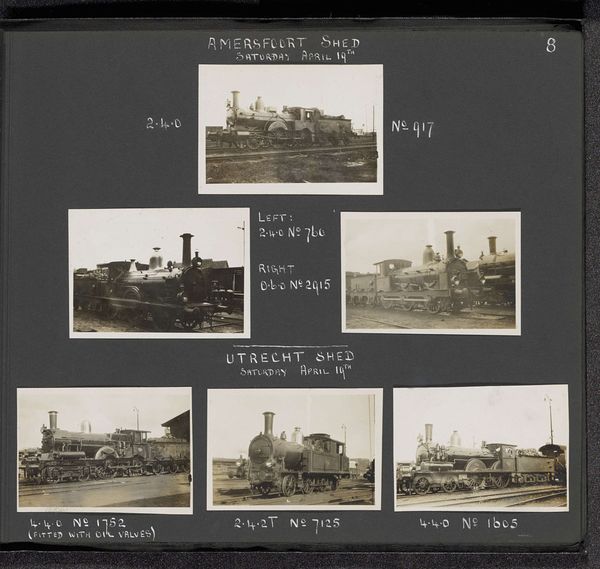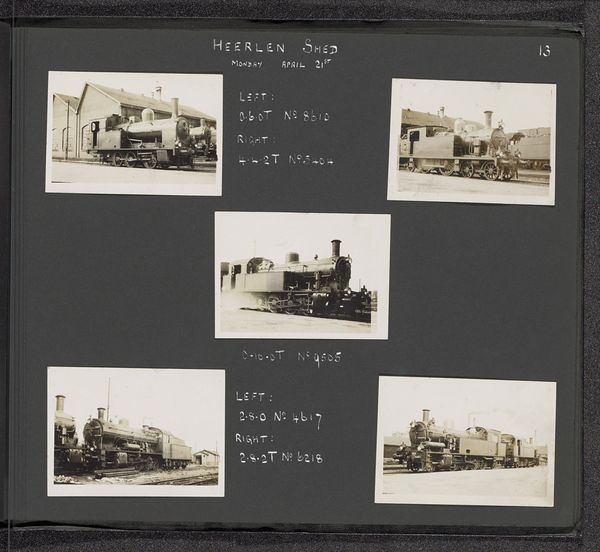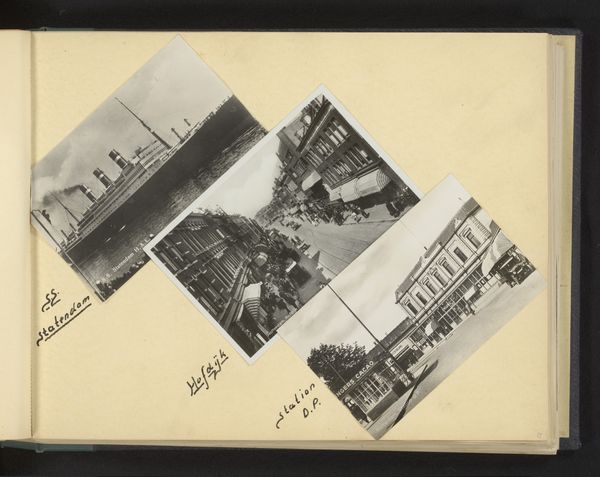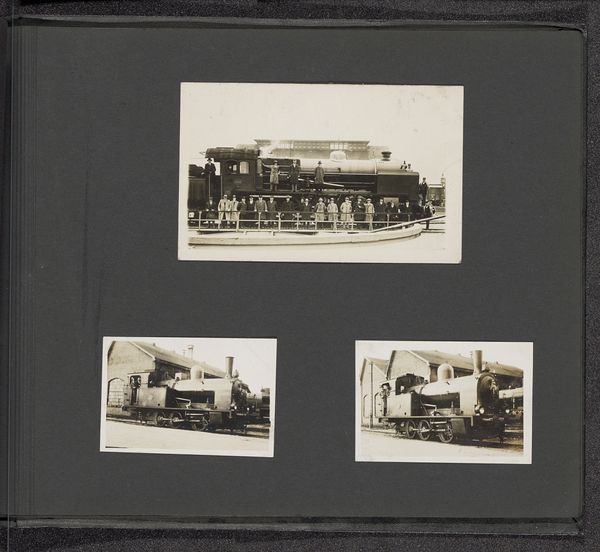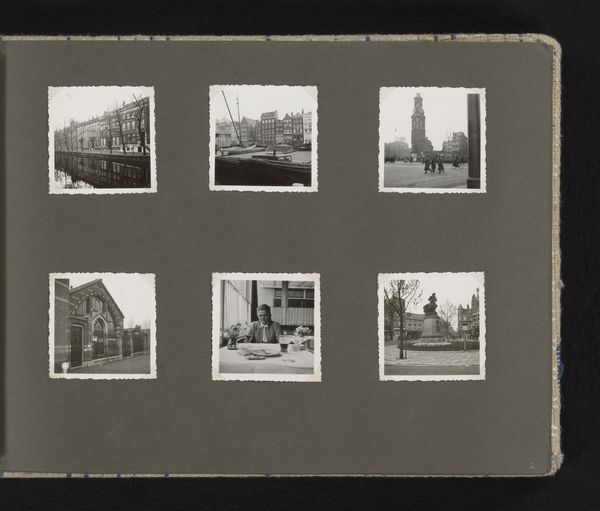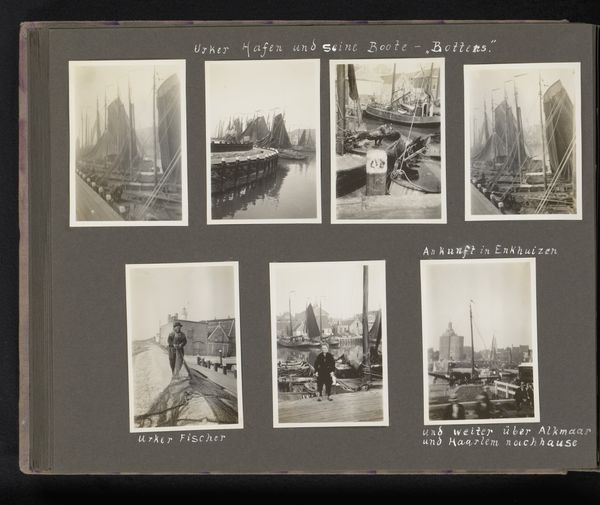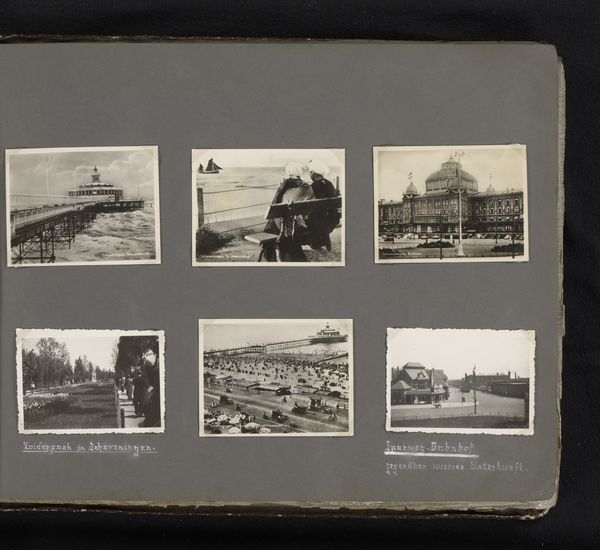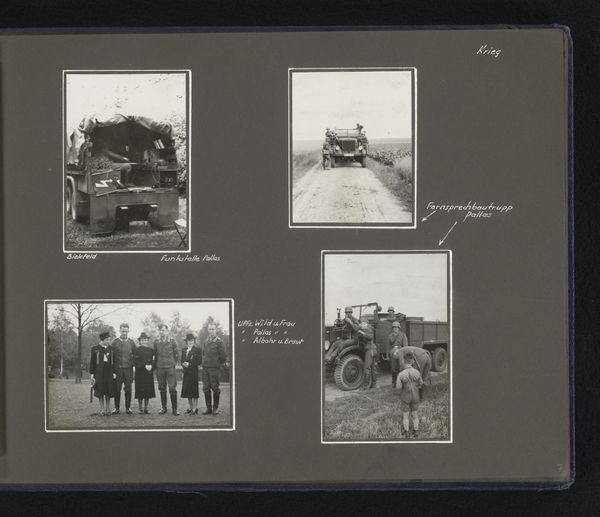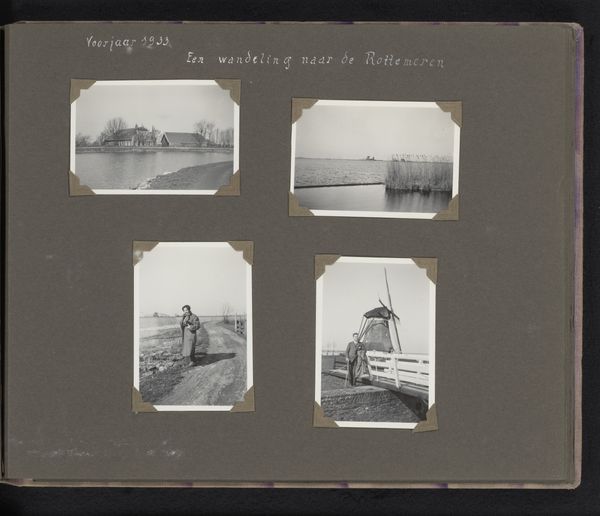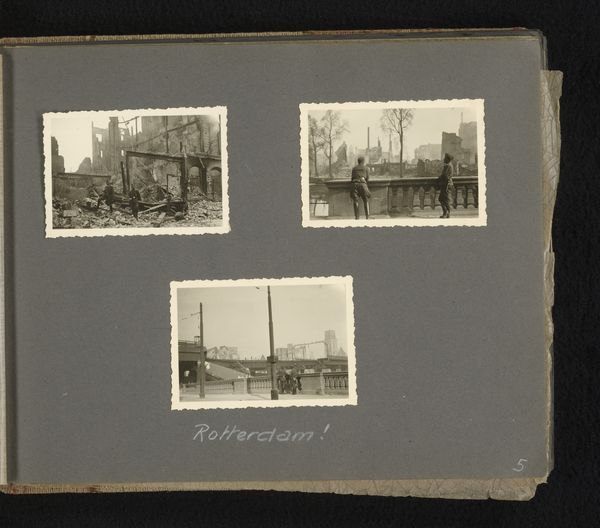
print, photography
#
still-life-photography
# print
#
photography
#
cityscape
#
modernism
Dimensions: height 240 mm, width 275 mm
Copyright: Rijks Museum: Open Domain
Editor: This photographic print, titled "Locomotieven op spoorwegemplacement Amsterdam," believed to be from between 1930 and 1934, captures locomotives. It’s quite an intriguing layout with multiple smaller images on one larger print, like a contact sheet almost. I'm curious about its cultural context. How would you interpret this work in terms of its historical significance? Curator: Well, think about the early 20th century. The rise of industry, the fascination with machinery, and the advent of photography as a means of documenting and celebrating progress all converge here. This image isn’t just about locomotives; it reflects a societal shift, a visual embrace of modernity and technological advancement. How do you see the photographer's role in all of this? Are they simply documenting, or are they making a statement? Editor: I suppose there’s a bit of both. It’s documentary, capturing these impressive machines, but the layout feels deliberate. Was this a common way of presenting photography at the time? Curator: Exactly. Presenting a series of images like this was relatively common. It was a way of presenting comprehensive information about different classes or modifications of locomotives, it speaks to a culture of cataloging and documenting within industrial and engineering fields. But beyond mere documentation, photography had become a powerful tool for shaping public perception, glorifying industrial achievements, and promoting a particular vision of progress. Who do you think the intended audience for an image like this might have been? Editor: Maybe railway enthusiasts? Or even potential investors? It's interesting how this image bridges industrial record and… well, almost propaganda, in a way. Curator: Precisely! And notice the cityscape peeking in the background; that places these machines firmly within an urban environment, reinforcing their role in the modern industrialized city. Editor: I hadn't considered that. So, it’s not just about trains, but about how technology and the urban landscape were being woven together in the public consciousness. It does make you wonder about the narratives embedded in what seem like simple photographs. Curator: Absolutely. We have to be attentive to these embedded ideas in all of the artifacts we examine. Editor: That's given me a whole new way to view historical photography. Curator: Indeed, this single piece unlocks more information about the culture from which it comes!
Comments
No comments
Be the first to comment and join the conversation on the ultimate creative platform.

